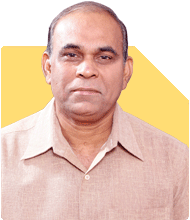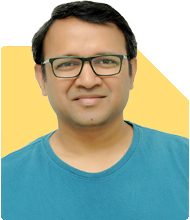40-year-old salaried professional seeks tax-saving advice through mutual funds

I’m Kunal from Mumbai. I’m 40, a salaried professional with two children. How can I optimize my tax savings through mutual funds, PPF, and NPS for the long term?
Key Investment Options:
1. Public Provident Fund (PPF):
• Tax Deduction: Up to Rs 1.5 lakh under Section 80C.
• Lock-in: 15 years, providing low-risk, government-backed returns (around 7.1%).
• Strategy: Maximize PPF contributions to Rs 1.5 lakh annually for stable, long-term, and tax-free growth.
2. National Pension System (NPS):
• Tax Deduction: Rs 1.5 lakh under Section 80C and an additional Rs 50,000 under Section 80CCD(1B).
• Equity Exposure: NPS offers flexibility in equity allocation, providing the potential for higher long-term returns.
• Strategy: Contribute Rs 50,000 for the additional tax benefit and build a retirement corpus, balancing equity and debt for moderate growth.
3. Equity-Linked Savings Scheme (ELSS):
• Tax Deduction: Up to Rs 1.5 lakh under Section 80C.
• Lock-in Period: 3 years (shortest under 80C).
• Growth Potential: Higher returns due to equity exposure.
• Strategy: Start a Systematic Investment Plan (SIP) in ELSS funds to benefit from tax savings and market-linked growth over the long term.
4. Comprehensive Plan for you:
a. Maximizing Tax Benefits:
• Contribute Rs 1.5 lakh to PPF for safe, consistent returns.
• Invest Rs 50,000 in NPS to take advantage of the additional tax deduction under Section 80CCD(1B) and build a retirement corpus.
• Allocate any remaining eligible tax-saving contributions to ELSS to optimize growth under Section 80C.
b. Diversified Investment Strategy:
• PPF: A risk-free option with guaranteed returns, perfect for long-term, low-risk growth.
• NPS: A moderate-risk option with the potential for higher returns through equity exposure, focusing on retirement planning.
• ELSS: A higher-risk, higher-reward option for long-term wealth creation and tax savings.
c. Additional Tax-Saving Measures:
• Health Insurance Premiums: Claim up to Rs 25,000 (or Rs 50,000 if covering senior citizen parents) under Section 80D.
• Home Loan Interest: Deduct up to Rs 2 lakh under Section 24(b) for home loan interest payments.
d. Tailored Recommendations:
• PPF: Max out the Rs 1.5 lakh limit to secure risk-free growth.
• NPS: Contribute Rs 50,000 annually to build a retirement corpus while enjoying additional tax benefits.
• ELSS: Invest the remainder of your Section 80C limit in ELSS to benefit from equity market growth.
• Regular Monitoring: Review and rebalance your portfolio as your financial goals evolve to ensure optimal growth and tax savings.
By following this balanced and diversified strategy, Kunal can optimize his tax savings while securing a solid financial future for his long-term goals.
You may like to see similar questions and answers below
Omkeshwar Singh | Answer |Ask -Follow
Head, Rank MF - Answered on Jul 07, 2022
Ramalingam Kalirajan |10894 Answers |Ask -Follow
Mutual Funds, Financial Planning Expert - Answered on Apr 05, 2024
T S Khurana |536 Answers |Ask -Follow
Tax Expert - Answered on Aug 10, 2024
Ramalingam Kalirajan |10894 Answers |Ask -Follow
Mutual Funds, Financial Planning Expert - Answered on Aug 16, 2024
T S Khurana |536 Answers |Ask -Follow
Tax Expert - Answered on Aug 23, 2024
Mayank Chandel |2576 Answers |Ask -Follow
IIT-JEE, NEET-UG, SAT, CLAT, CA, CS Exam Expert - Answered on Dec 17, 2025
Radheshyam Zanwar |6747 Answers |Ask -Follow
MHT-CET, IIT-JEE, NEET-UG Expert - Answered on Dec 16, 2025
Shalini Singh |181 Answers |Ask -Follow
Dating Coach - Answered on Dec 16, 2025
Patrick Dsouza |1429 Answers |Ask -Follow
CAT, XAT, CMAT, CET Expert - Answered on Dec 16, 2025
Nayagam P P |10858 Answers |Ask -Follow
Career Counsellor - Answered on Dec 16, 2025
Nayagam P P |10858 Answers |Ask -Follow
Career Counsellor - Answered on Dec 16, 2025
Samraat Jadhav |2510 Answers |Ask -Follow
Stock Market Expert - Answered on Dec 16, 2025
Samraat Jadhav |2510 Answers |Ask -Follow
Stock Market Expert - Answered on Dec 16, 2025
Nayagam P P |10858 Answers |Ask -Follow
Career Counsellor - Answered on Dec 16, 2025
Nayagam P P |10858 Answers |Ask -Follow
Career Counsellor - Answered on Dec 16, 2025




























